“Nature is the source of all true knowledge.”
–Leonardo da Vinci
December 2023, work by chance took me back to Entebbe after one year. I took special deviation to reach one day early just for one thing – visit the Swamp with Shakul to see the Shoebill, again. Just in case you are wondering which swamp? Who is Shakul and What is a Shoebill? Head over to my early write up on Shoebill in Mbamba Swamps at https://www.birdingjo.com/2021/02/shoe-bill-series-2/ and https://www.birdingjo.com/2020/12/meeting-a-shoe-bill-stork/.
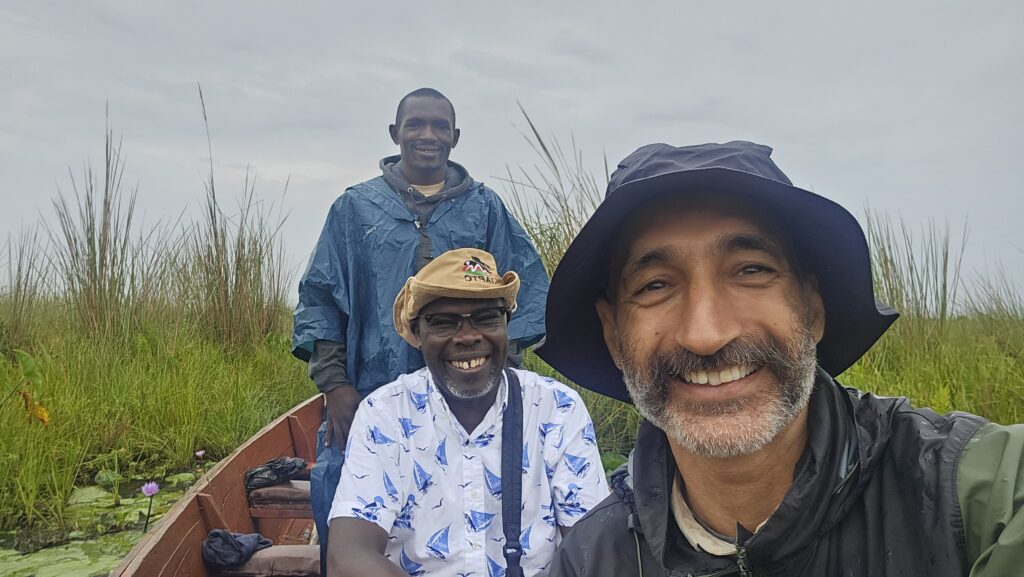
which is used for the tracking of Shoebill -03 Dec 2023
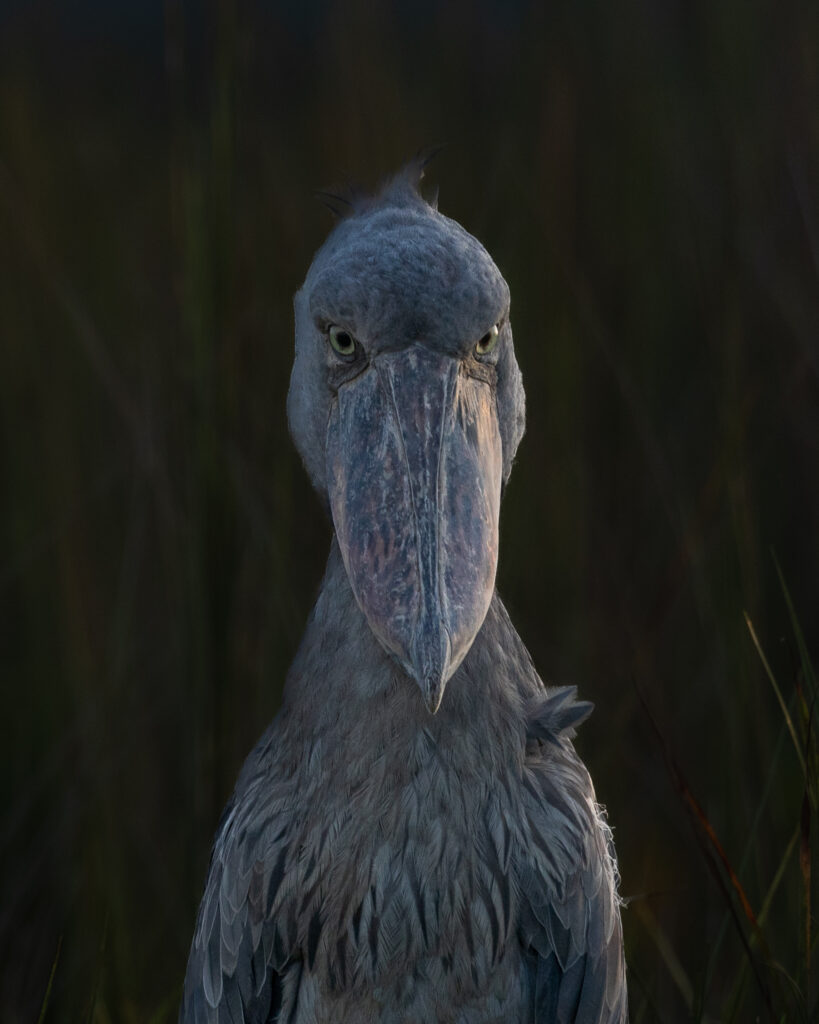
Isn’t this creature simply gorgeous – a unique species with a charismatic persona. Shoebills are extremely patient and confident of what they do. Superbly adapted to the life in Papyrus Swamps, they are the top predators in the landscape.

Here are some interesting facts related to the shoebills.
- The shoebill (Balaeniceps rex), also known as the whalebill, whale-headed stork, and shoe-billed stork. It derives its name from almost a foot long, shoe-shaped bill.
- Shoebills were considered a stork at some time, but now they are a unique bird in their own family.
- Closest relatives were considered to be Pelicans, though some molecular studies put Hamerkop to be the closest relative, thus placing them in the order Pelecaniformes.
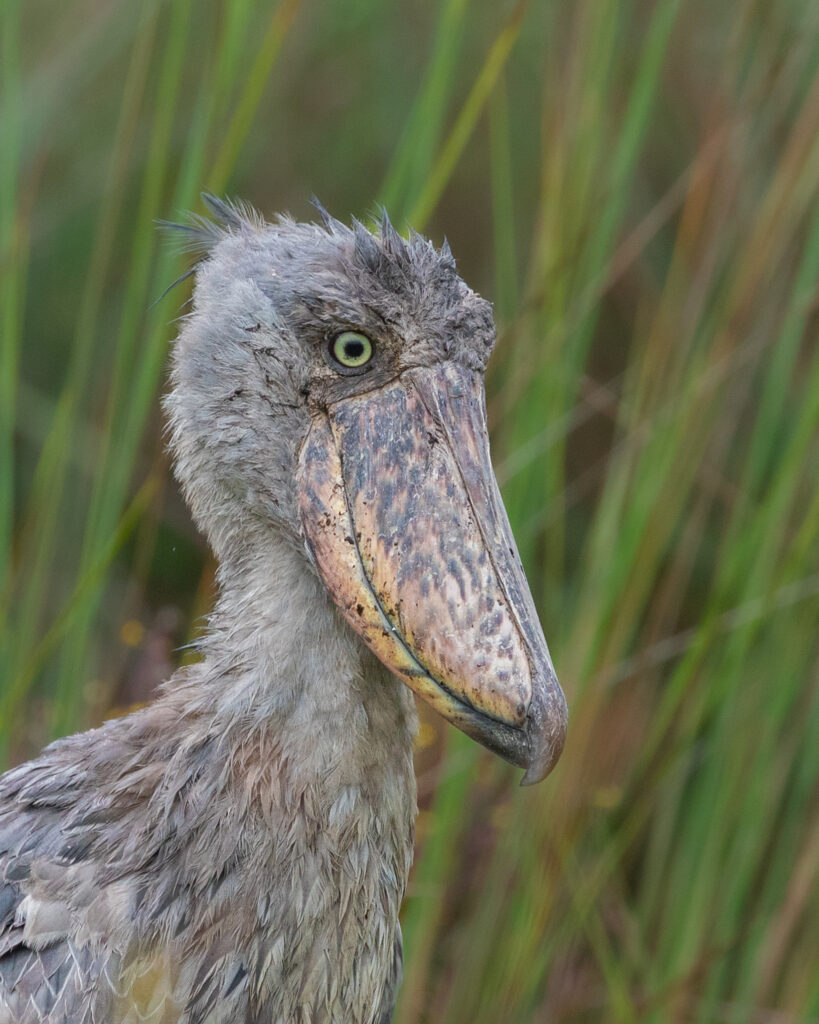
- They are exemplary ambush hunters, where they stand motionless for minutes on end and ‘collapse’ or lunge forward on an unsuspecting lungfish or any other prey including other fish, snakes crocodile babies and the Nile Monitor Lizards.
- It grows upto 110 to 140 cm tall, and weighs approximately 5 to 6 Kgs. Flies effortlessly and soars and glides comfortably like the kites.
- Specially adapted upper bill has a hook at the tip to prevent the big fish from slipping out of the grip. Large toes ensure smooth mobility over the floating vegetation in the swamps.
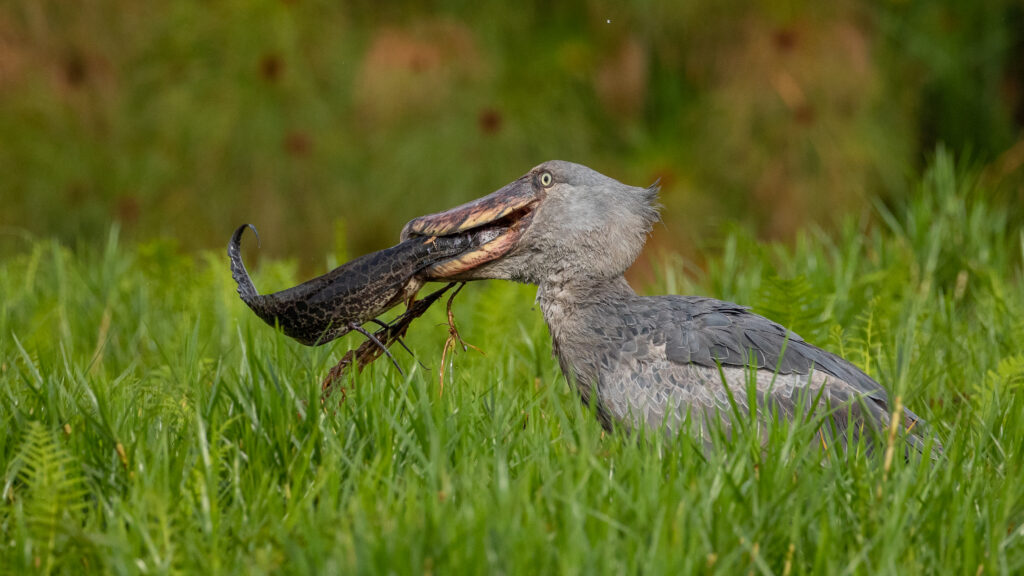
- Shoebills are solitary and monogamous. Reaching maturity at about three years, once the male and female pair up, the produce two eggs, only one chick survives.
- The shoebill occurs in extensive, dense freshwater marshes. Almost all wetlands that attract the species have undisturbed Cyperus papyrus and reed beds of Phragmites and Typha.
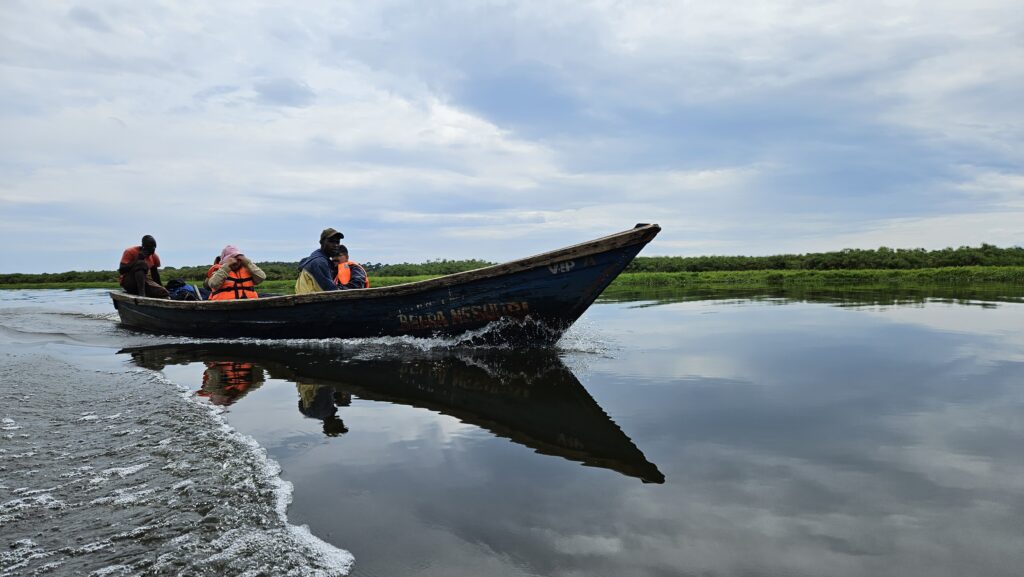
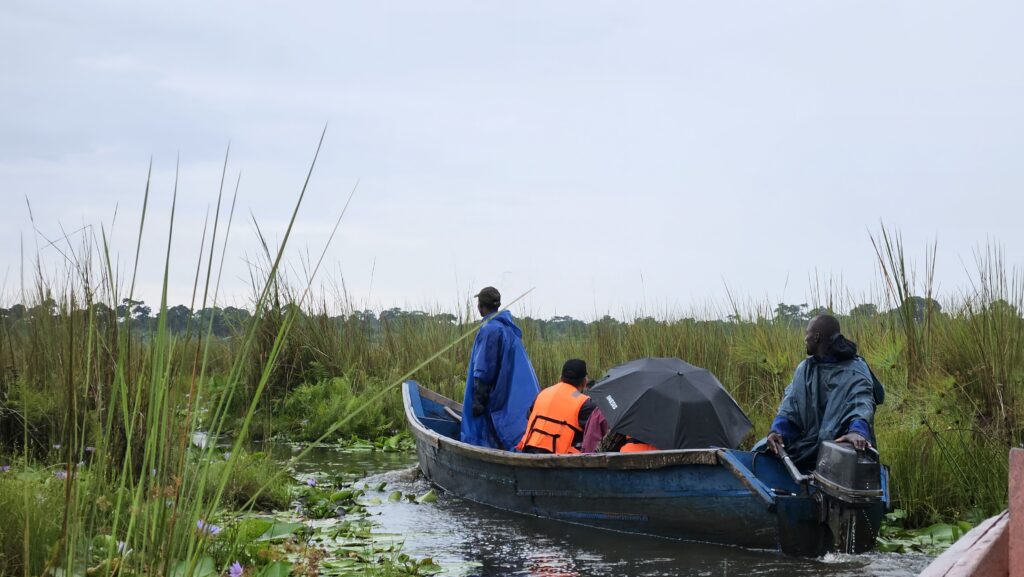
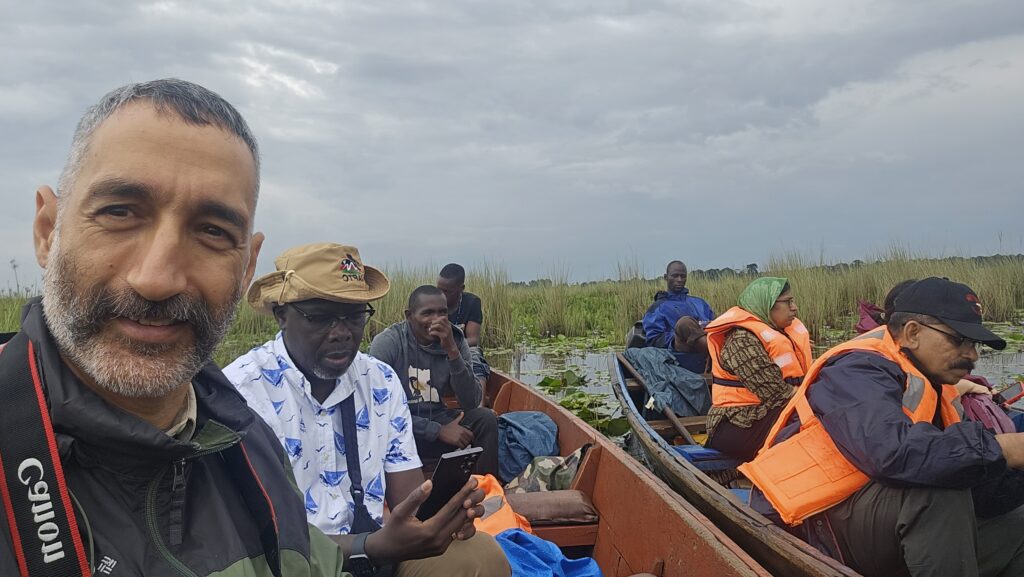
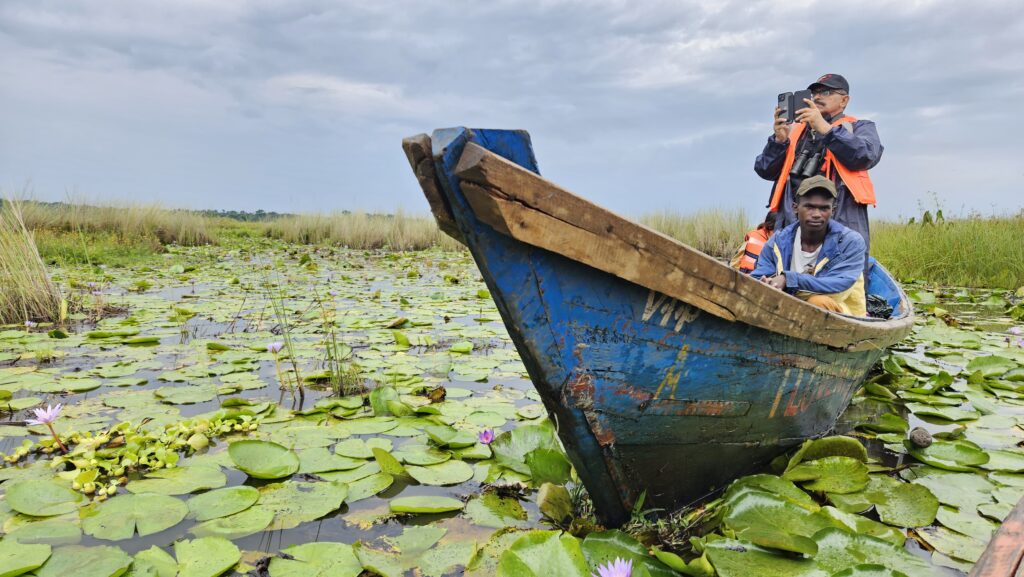
The shoebill stork has a prominent place in local folklore and mythology.
The bird has been part of the folklore as the stories and legends about the bird often depict it as a guardian of wetlands or a creature with supernatural abilities. Its uniqueness and prowess also make it a target of the human greed in terms of possessing it as a exotic pets or for their body parts presumably believed to have some medicinal properties. As such the traditional threats of poaching for eggs / young chicks / the bird meat itself add to the ever increasing pressure on the species.
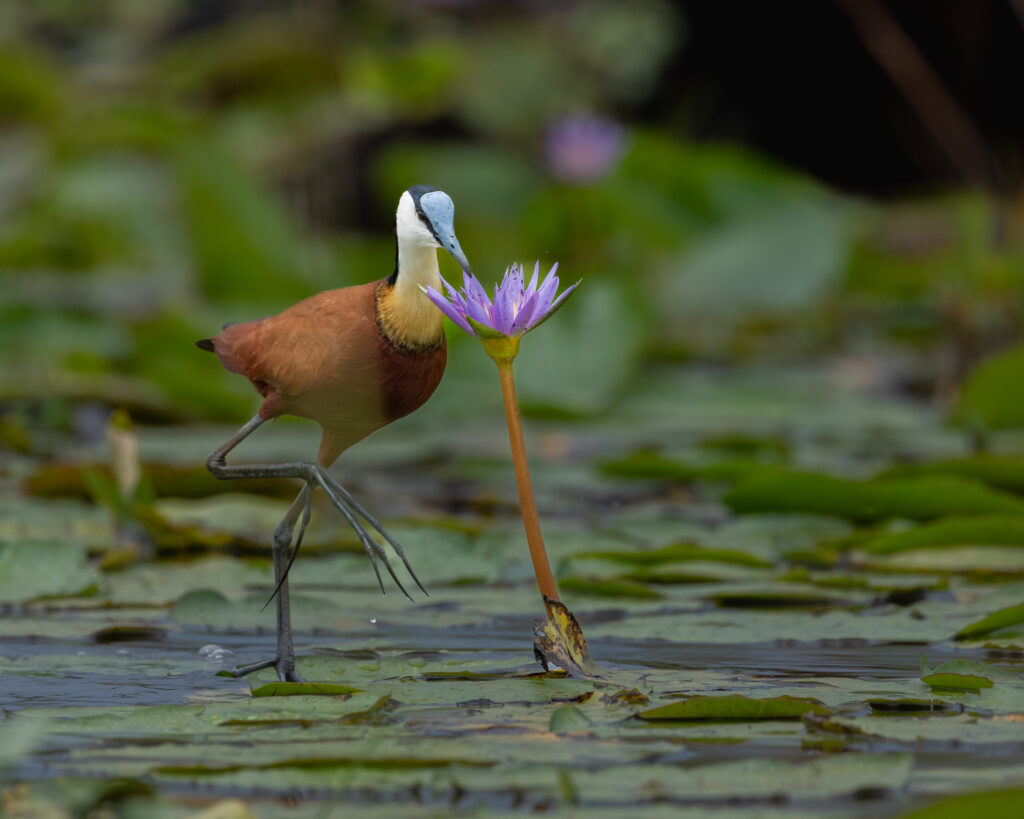
Not all is gloomy and dark, that is where people like Shakul and his community come into the picture. Shakul is one of the many local traditional fishermen who have taken to birding and being a guide exclusively for the Shoebills in the wetland of Mbamba. Being the sons-of-the-soil, Shakul and his fellow guides play a unique and irreplaceable role in the conservation of the habitat and its resident including the special Shoebills.
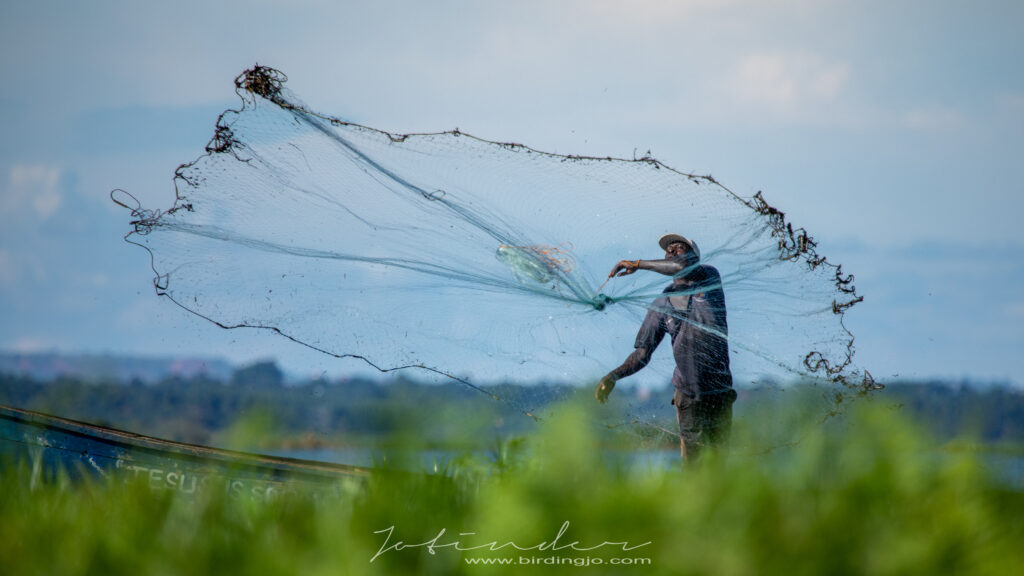
Their knowledge and ever-growing awareness is being passed on to the wider community. The local fishermen, who at one time used to kill the shoebill as a competitor for fish, no longer do that. They assist the few handful guides by sharing their knowledge of the area and sightings of the shoebill. In short, together, there are more people interested and invested in the wellbeing of the swamps and their unique resident.
I am hopeful and confident, similar stories and unfolding in other parts of Africa and the Shoebill is getting the right kind of human attention.
For the Mbamba swamps, I find two quotes to resonate with my feelings the most:
“At some point in life the world’s beauty becomes enough. You don’t need to photograph, paint, or even remember it. It is enough.” – Toni Morrison
“I like this place and could willingly waste my time in it.” – William Shakespeare
I sincerely hope, you too get a chance to visit the Shoebill in some swamp around Africa !!